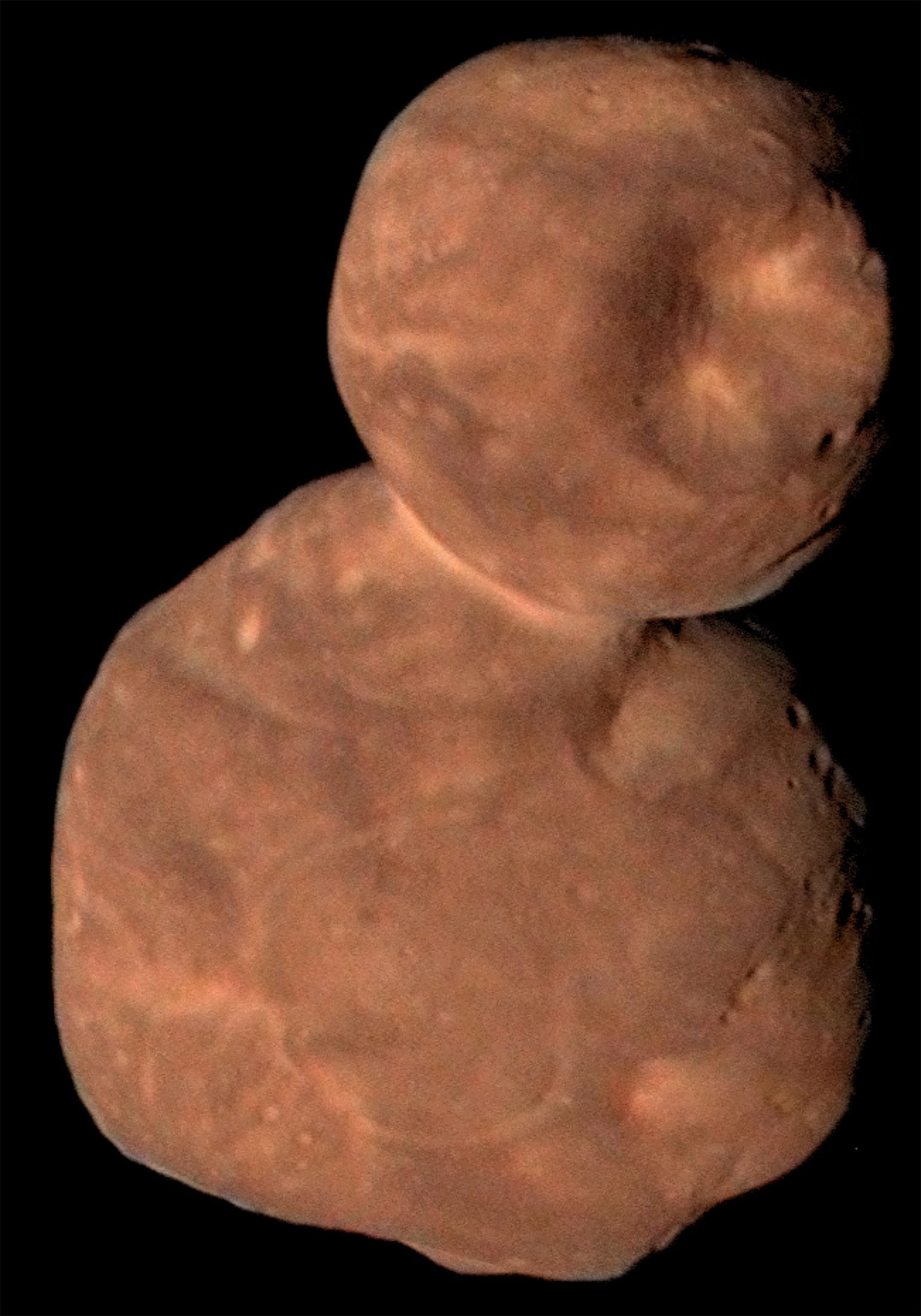Space snowman four billion miles away reveals secrets of how planets form
Nasa provides further results from New Horizons’ encounter with Arrokoth
Your support helps us to tell the story
From reproductive rights to climate change to Big Tech, The Independent is on the ground when the story is developing. Whether it's investigating the financials of Elon Musk's pro-Trump PAC or producing our latest documentary, 'The A Word', which shines a light on the American women fighting for reproductive rights, we know how important it is to parse out the facts from the messaging.
At such a critical moment in US history, we need reporters on the ground. Your donation allows us to keep sending journalists to speak to both sides of the story.
The Independent is trusted by Americans across the entire political spectrum. And unlike many other quality news outlets, we choose not to lock Americans out of our reporting and analysis with paywalls. We believe quality journalism should be available to everyone, paid for by those who can afford it.
Your support makes all the difference.The most distant object ever explored by spacecraft is helping scientists to understand how planets are formed.
Arrokoth, a cold, ultrared rock of frozen methane more than four billion miles from Earth, possesses a distinctive shape that has been compared to a potato or a snowman.
However observations by the New Horizons spacecraft during its close encounter with the 22-mile long object last year have revealed that it was created by the merger of two separate bodies 4.5 billion years ago.
These two objects formed close together and at low velocity from a cloud of solid particles in the primordial solar nebula, orbited each other, and then gently combined, according to analysis by the Nasa mission team.
“Just as fossils tell us how species evolved on Earth, planetesimals tell us how planets formed in space,” said William McKinnon, a New Horizons co-investigator from Washington University in St Louis.

“Arrokoth looks the way it does not because it formed through violent collisions, but in more of an intricate dance, in which its component objects slowly orbited each other before coming together.”
The team’s findings were reported at the annual meeting of the American Association for the Advancement of Science on Thursday and in three separate papers in the journal Science.
“Arrokoth is the most distant, most primitive and most pristine object ever explored by spacecraft, so we knew it would have a unique story to tell,” said New Horizons investigator Alan Stern, of the Southwest Research Institute in Boulder, Colorado.
“It’s teaching us how planetesimals formed, and we believe the result marks a significant advance in understanding overall planetesimal and planet formation.”
Since its visit to the object on 1 January 2019, New Horizons has journeyed another 316 million miles beyond Arrokoth, which means sky in the language of the Native American Powhatan people,
The research team is now looking for other potential targets to investigate as it passes through the Kuiper Belt.
“For future missions, we need to be able to send spacecraft to the Kuiper Belt and keep them there,” said David Jewitt of the University of California.
That would allow “these intriguing bodies to be studied in stunning geological and geophysical detail,” he added.
Additional reporting by Associated Press

Join our commenting forum
Join thought-provoking conversations, follow other Independent readers and see their replies
Comments